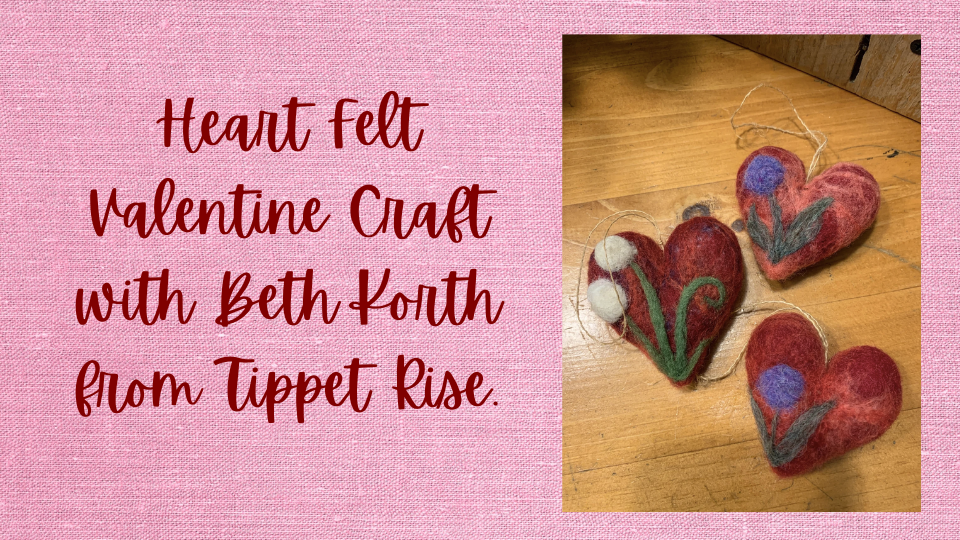

Join us for this awesome class taught by Beth Korth from Tippet Rise. It’ll be a fun follow-up for previous students or someone coming in new as well. We will focus on small heart forms as a base and decorate them.
You must pre-register for this class using this link as we are limiting the class to 15 adults.
https://docs.google.com/forms/d/1vYgS-GUQYEkGGNW4AtL3xpbxK4-W_Z2SlH0oeTNNZ_g/edit
Needle felting is a creative craft that involves sculpting shapes and figures using wool and special felting needles. It’s a simple yet versatile technique that allows you to create amazing creations with just a few supplies.
Wool is the primary material used in needle felting. Each wool fiber is covered in flat, overlapping scales, which, when agitated, come into contact with each other.This contact locks the fibers together, causing the wool to felt. The orientation and direction of the scales are random, ensuring a secure bond during the felting process.
Felting needles are unique tools designed with tiny barbs on the end. These barbs, aligned in one direction, play a crucial role in felting. When the needle is repeatedly stabbed into the wool, the barbs pull the wool in but prevent it from sliding back out. This action tangles the wool fibers and causes the scales to interlock, resulting in felting.

A cushion or pad is essential for needle felting. It provides a surface to work on, allowing the felting needle to penetrate the wool without reaching the table or your leg. The cushion absorbs the needle’s impact, making the felting process smoother and more comfortable.
The Process: To start needle felting, roll up a small amount of wool and begin stabbing it with the felting needle. As you repeatedly stab and turn the wool, the needle pulls more wool into itself, and the fibers with their scales interlock and felt. With continued stabbing and turning, a firm round shape begins to form. Additional wool is added as needed to sculpt and shape the creation.
Source: https://bearcreekfelting.com/felting-101/